How to grow arugula on a windowsill?

Many people dream of fresh greens all year round. But buying it in the store can be expensive at times, especially arugula. This problem can be easily solved by planting a spicy culture at home on a windowsill.
Peculiarities
Arugula is an annual of the Cabbage family, the Indau genus. The plant is also called eruka sowing, indau and caterpillar. In the wild, it can be found in northern Africa, Central and Asia Minor, European countries with a warm and temperate climate. In Russia, she lives in the southern regions: at the foot of the Caucasus Mountains, in Dagestan. Arugula has a sharp mustard-nut taste; culinary experts of different nations use it as a spicy additive.
The plant is also valued for its pharmacological properties. Housewives love to grow arugula on the windowsill for its fresh greens, peculiar smell, culinary features.
The flowers of the plant are small and inexpressive, but the leaves, which are pinnately separated with serrated lobes, may please flower growers.


Home varieties
Not all caterpillar varieties are suitable for growing on a windowsill. For these purposes, seeds of early and middle plant species can be found on sale. It is better to plant both of them, then the fresh spice will be on your table throughout the year. The following varieties are suitable for use at home.
- "Rococo". An early variety, suitable for food already on the 20th day of development. The plant contains a leaf plate, quite wide for an Indau, of a wonderful bright green color. The spice has a sweet and pungent taste.

- Wild Rocket. Italian early-ripening variety, harvest can be expected on the 20th - 23rd day. Elongated, rich green leaves are characterized by a beautiful outline. It is this species that has a pronounced mustard-nut taste.
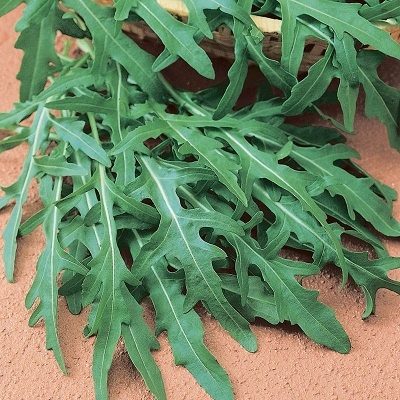
- "Spartacus". For the plant to ripen, 20-25 days are enough. The shape of the leaves is similar to the Rococo variety: wide and juicy, emerald in color. The grass can be stretched up to 20 cm in height. It contains a large amount of essential oils, vitamins and useful microelements, therefore it is used in dietary nutrition.
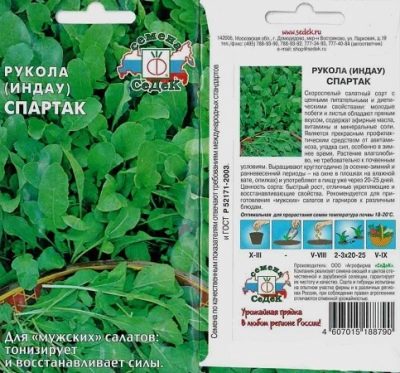
- "Lybid". An ultra-early variety developed at the Ukrainian enterprise "NK ELIT". On the 10-20th day, you can already harvest the first crop. Up to 10 leaves are formed in the outlet. Malachite-colored plates at an early stage of development do not contain cuts, and then, growing up, acquire a characteristic carved contour.
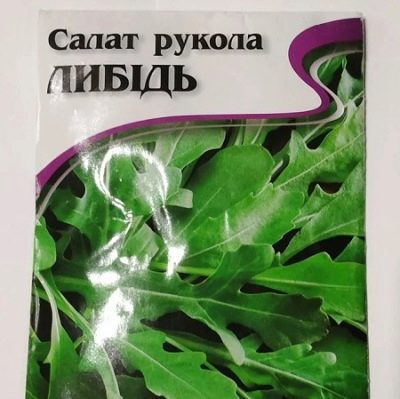
- Koltivata. Early maturing Dutch variety, edible 3 weeks after sowing. Leaves are light green, elongated-rounded, waviness is observed only in the lower root part. A juicy variety created for adding to salads, it has a rich aroma and a piquant mustard taste.

- "Poker". The variety was surprisingly successful both for the beauty of the carved leaf, and for its nutritional properties, and for its pronounced mustard-olive taste. Each rosette contains 10-12 sheets up to 20 cm long each. You can collect green mass on the 25th day of development.
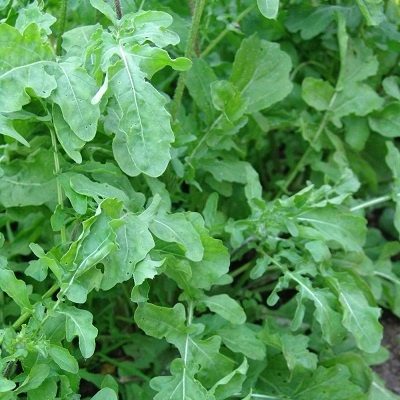
- Corsica. Early ripening variety, ripens in 3-4 weeks, leaves grow up to 20 cm. It is noted for its resistance to cold, can be grown not only in indoor conditions, but also in sheds, on the veranda, in greenhouses. Fresh tender leaves have a wonderful sweetish taste with a mustard tint and a bright spicy aroma.
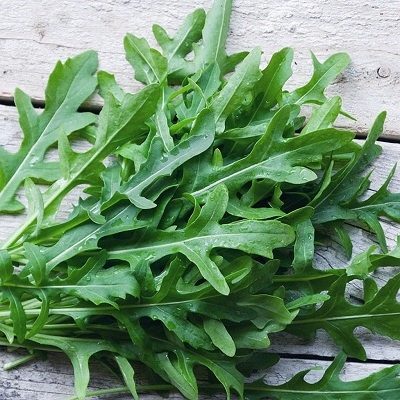
- "Witch Doctor". A mid-season variety, belongs to the Ukrainian selection. It takes 4 weeks to ripen. Each rosette forms no more than 7 wide leaves, growing up to 25 cm.The variety loves moisture, the soil will have to be constantly monitored, not allowing it to dry out.
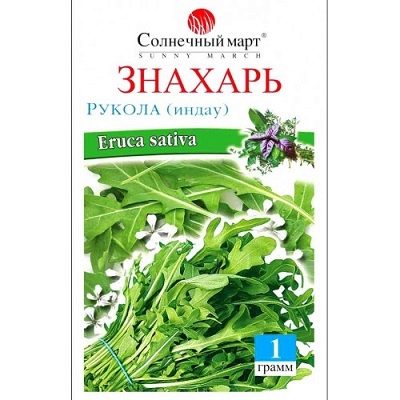
- "Curiosity". The variety has a medium ripening rate (25-30 days), although you can try the greens in two weeks. Leaves of rich green color with a beautiful curly outline, collected in a lyre-shaped rosette. Gourmets love this "curiosity" for its piquant taste and high taste.

- "Solitaire". It takes an average of 25 days for the variety to ripen. The salad-oil plant has leaves of a pleasant dark green color with dissected toothed lobes. The variety is characterized by a peculiar aroma and sweetish-spicy taste.
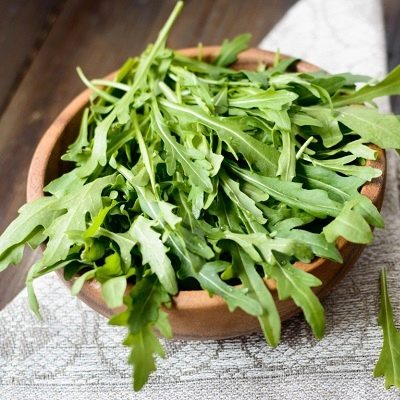
- "Sicily". Cold-resistant variety, ripens within a month. The plant is noted for beautiful dark carved greenery and pronounced nutty-pungent taste. The rosette with leaves can be up to 60 cm high.
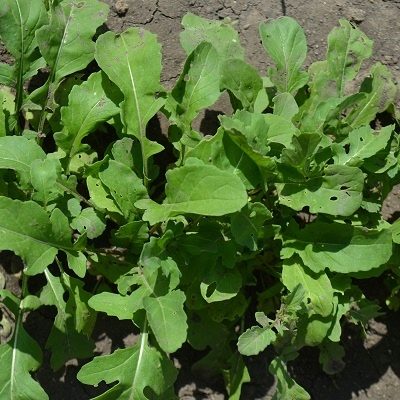
Landing
Anyone who decides to plant arugula on the windowsill will receive an excellent spice with minimal effort associated with cultivation and care. The plant is unpretentious, but it feels care and responds to it with an abundance of fresh greens with a peculiar taste and pleasant smell. Arugula can be grown not only in winter. To get a spice in the summer, you need to plant the seeds in the spring. We will tell you in more detail how to do this in a room environment.
Choice of containers
Any container with a depth of more than 15 cm is suitable for the spice: flower pots, plastic containers, wooden boxes. It is important that the bottom of the container has holes to remove excess moisture during watering, otherwise the sensitive roots of arugula will begin to rot. Pallets installed under the containers with grass will help protect the windowsill from water seepage.
For any plant, the priority is containers made of natural materials: clay, ceramics, wood. They are able to pass air and not create a greenhouse effect. To save space on the windowsill, it is more convenient to choose a rectangular container.
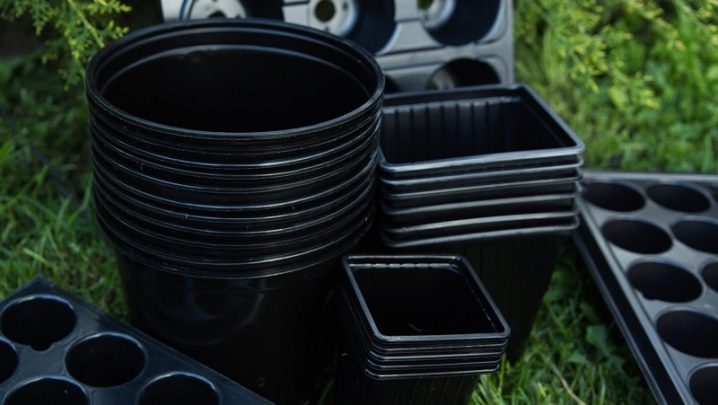
Selection of soil and seeds
Arugula is not capricious in terms of soil selection, but nutritious soil has not prevented anyone yet. You can buy ready-made soil mixture at retail outlets for flower growers. For a rural dweller, it is better to collect soil for planting spices after picking cucumbers or cabbage, they are always fed with organic matter, especially if manure was used as fertilizer.
For arugula, choose earth with neutral or slightly alkaline acidity. Too heavy clay soil must be modified by mixing it with sand and peat. If the land, on the contrary, is loose, sandy, it is necessary to fertilize it with humus.
When the soil is prepared, it should be decontaminated to get rid of harmful bacteria and pest larvae. This can be done in three ways:
- heat the ground in the oven;
- pour over boiling water;
- treat with a manganese solution.
As for the preparation of seeds, due to the high germination rate, flower growers believe that they do not need any special preliminary actions. The planting material may not be soaked or germinated, but it is still better to disinfect it in a weak solution of manganese a few hours before planting.

Sowing
It is not difficult to plant a caterpillar; sowing is carried out according to the following scheme.
- Drainage is laid out at the bottom of the prepared box. For it, pebbles with sand, expanded clay, vermiculite, gravel, broken brick or any other coarse-grained material are used. The drainage layer helps the water not to stagnate in the soil.
- Then the container is covered with earth, not bringing to the brim a few centimeters.
- The soil is evenly moistened with a spray bottle.
- The largest seeds are chosen and laid out in rows with a step of 3-5 cm. Each seed is slightly deepened into the ground so as not to displace during sprinkling with soil.
- Then everything is covered with soil with a layer of 1–1.5 cm and moistened.
- The box with seedlings is placed in a warm place.
Before the first shoots appear, the container can be covered with foil. A warm, humid microclimate will form under it, contributing to an accelerated germination process.When the seedlings rise, the box must be transferred to the windowsill. Any window will do except the north side.

Care
Growing arugula is not a big deal, so it is often planted in an apartment on a windowsill, balcony; in private houses, they are displayed in pots on the veranda or in the greenhouse. If the seedlings are properly planted, the soil is disinfected and simple care is taken, fresh spice in dishes will delight you all year round.
Lighting and temperature
Arugula prefers good lighting and room temperature between 18-25 degrees. It should not be placed on the windowsill from the north side, otherwise you will have to take care of additional lighting. In insufficient light, the leaves stretch upward, become thinner, and the rosette weakens. In the Indau winter, you will need an additional 4-5 hour light source.
In the southern regions - with sweltering heat and too strong lighting - the caterpillar begins to shoot at the expense of green nutritious leaves. The arrow takes away the plant's strength for flowering and ripening of seeds, so the rosette with leaves stops developing. If a lack of moisture is added to the high temperature, rucolla begins to accumulate excessive bitterness in the leaves. In such cases, the grass is darkened and sprayed with a spray bottle.

Humidity
The caterpillar grows in a dry environment, but you should not expect fleshy juicy leaves from it under such conditions - they will become thin, bitter, without pleasant aromatic notes. Growing a really good spice that can revive any dish is possible only with sufficient air humidity.
If the apartment does not have a humidifier, you can spray the plant with a spray bottle 2-3 times a week or put a container filled with water next to it. Moisture saturation is especially required when the grass grows in summer on the windowsill on the south side of the house or stands at the radiator during the heating season.
Watering
Arugula loves moderate soil moisture; coarse drying of the earthy coma or excessive flooding of the plant with water should not be allowed. If the room is cool, the liquid from the pan should be drained, but in hot conditions it will only be beneficial, as it refreshes the air.
On average, at a temperature of 25 degrees, irrigation is carried out 2-3 times a week. When watering, you should not add fertilizing to the water - the plant has enough of those substances that were in the soil during planting to develop.

Thinning
If during planting the topsoil is sown haphazardly, grown seedlings with 2-3 leaves should be thinned out. To do this, irrigate the soil, wait 5-10 minutes until it is saturated, and remove excess planting material, leaving a distance of 4-5 cm between the plants.
Once the caterpillar reaches initial maturity, the leaves can be used for food. The plant is thinned out again, but not immediately, but gradually the excess grass is removed, sending it to all kinds of dishes. In this way, the growth of more powerful rosettes with leaves is achieved. In adulthood, the distance between the bushes should be about 10 cm. In the future, for culinary purposes, pinch off a leaf from the arugula.
Diseases and pests
Indau contains many essential oils that repel harmful insects not only from its foliage, but also from nearby indoor plants. If the parasites do not get on the grass along with the soil, then excessive watering will be the main cause of the caterpillar's disease. It can cause root rot, damage to the roots will lead to wilting of the ground part of the plant.
Arugula leaves sometimes suffer from cruciferous flea beetles, although this is extremely rare at home. To combat them, Fitoverma preparations are used. To avoid diseases, the soil is disinfected before sowing, as described above. Also, avoid placing spice containers next to houseplants if pests are observed on them.
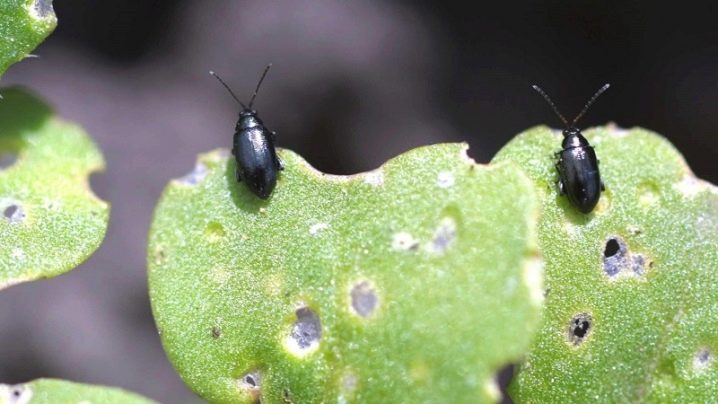
Harvesting and storage
After the final thinning, performed already in adulthood, the arugula leaves are regularly harvested. To do this, they are cut from each bush in an amount of no more than 1-3 pieces, giving the others the opportunity to grow up. The length of an adult leaf is 10–15 cm. The cut product can be stored in the refrigerator for up to six days. But if the garden bed is right on the windowsill, there is no need for supplies, because during cooking you can always use a fresh spicy leaf.
Whoever decided to harvest the crop completely and free the window sill from the container can freeze the leaves for future use. To do this, they are washed well, dried, wrapped in paper, and then placed in a plastic bag and sent to the freezer. But it should be remembered that a frozen product loses some of its spicy properties, which are fully provided by a freshly cut plant. Arugula can be grown at home throughout the year, using varieties with different ripening rates or by planting new seedlings.
The spice will not only add an irresistible taste to many dishes, but also create the atmosphere of a small natural oasis in the kitchen with the help of fresh herbs.









The comment was sent successfully.